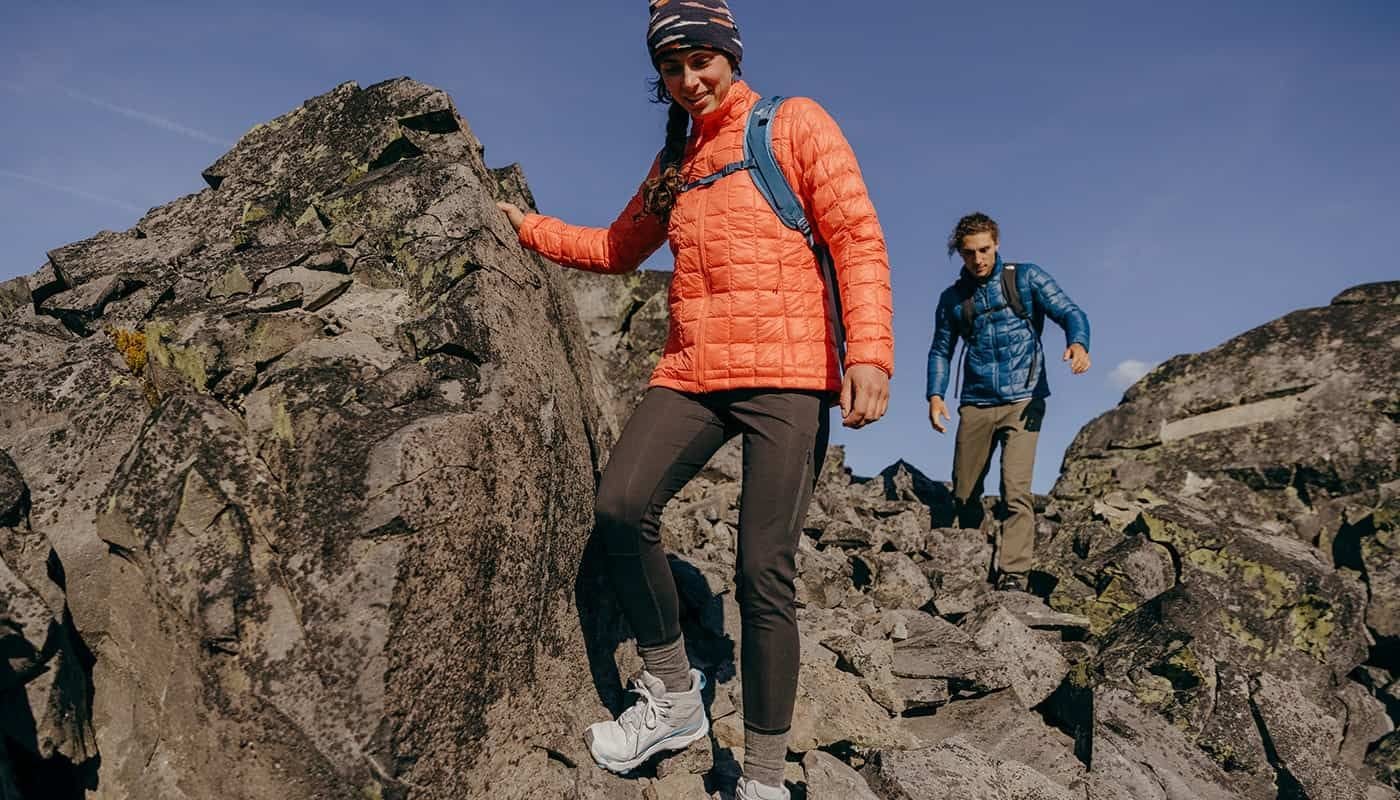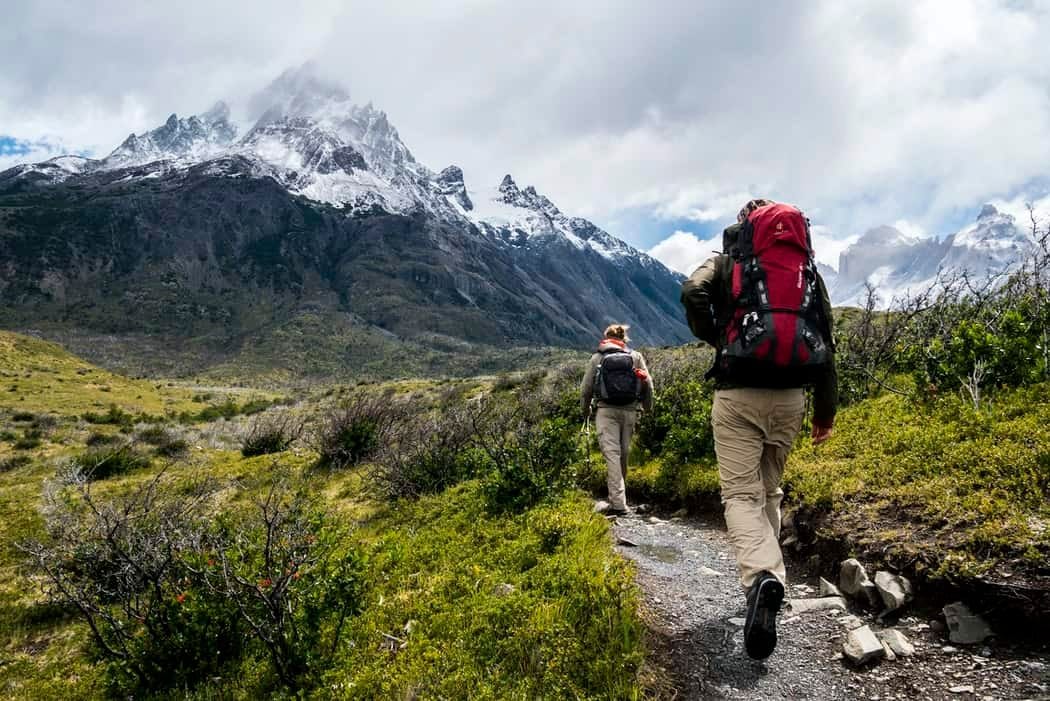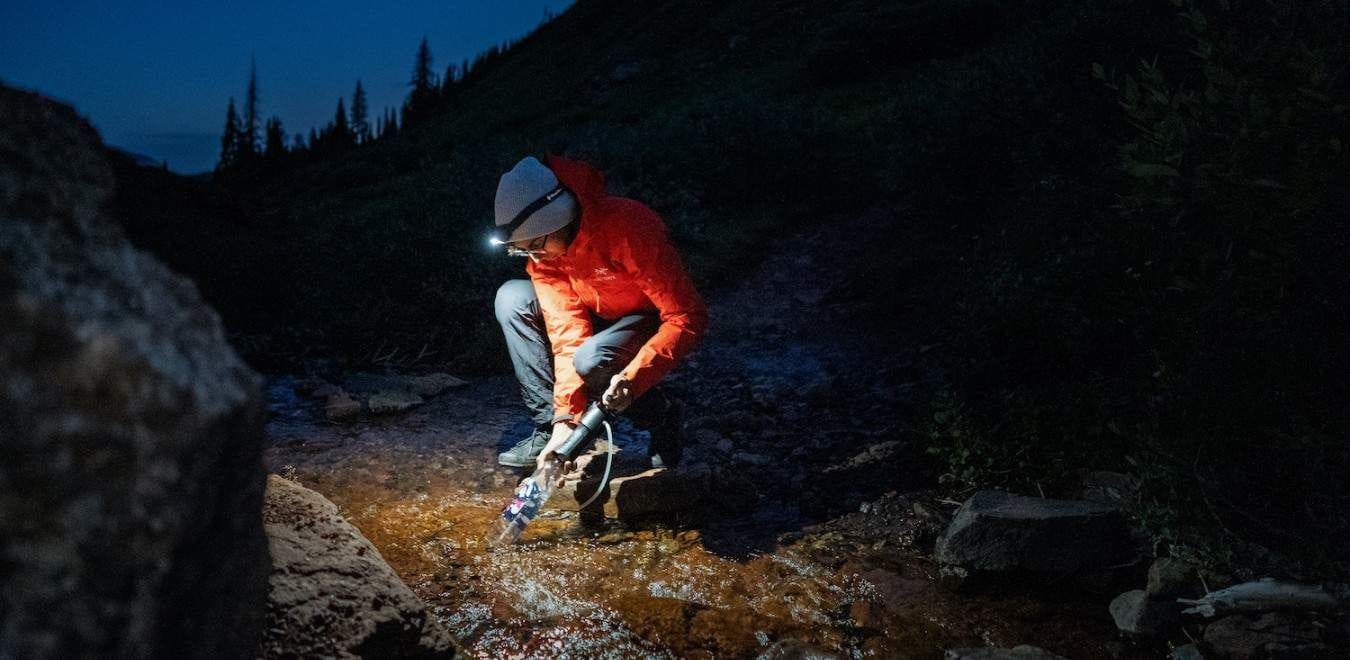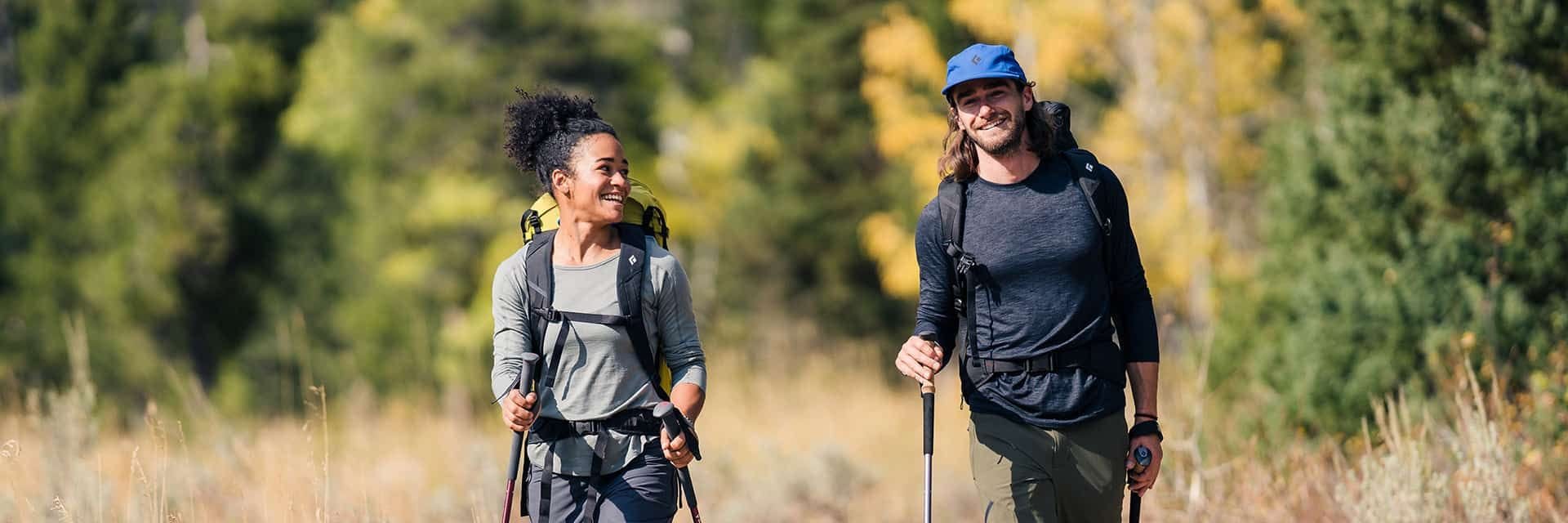In this article, we walk you through the basics of choosing the right backpack, what to put in it, and the best way to pack it. This comprehensive guide is suitable for both newcomers to backpacking trips, as well as trail blazers in need of a quick refresher.
Step 1: Plan Ahead
Before you start packing—and before you decide on how much food or how much clothing you’ll need—plan your trip details. Packing wisely means not overpacking and certainly not underpacking. Remember this as we journey through the topic.
Map It Out
Grab a map and study your route. Take note of key trail features, including the nearest town, elevation gain, distance between water sources, and the total length of your hike. You should also check the weather for the days you plan on hiking. These factors will help you decide what to bring and what to ditch.
High altitudes, even warm days, can turn cold and windy fast—so pack wind gear and extra layers; a pair of gaiters will make rocky paths less of a nuisance; and backup socks or a strappy pair of trail sandals will give you courage to ford that rushing river.
Quality Control
Lay everything out and test your gear. Camp in the backyard, break in your hiking boots, clean your water bottles, and check food expiry dates. The trail is the last place you want to discover a fatal flaw in your hiking kit.
After each trip, make note of what you found useful, what you didn’t, and what you missed to improve your next trip. Keep in mind that items like an emergency blanket or tick tweezers may never be used but having them could potentially save you from discomfort (or worse).
Step 2: Outdoor Gear and Equipment
Let’s talk about what to consider when planning your gear list. Start with the most fundamental items: Shelter system, sleep system, and pack system—A.K.A The Big 3 or Holy Trinity.
Shelter System
The most important tent specs to consider are size, weight, and seasonal compatibility.
- Tent size: 1- to 2-person tents are ideal for backcountry ventures; larger tents pair well with car-camping or short distances.
- Seasonal durability: 1- and 2-season tents are perfect for clear and warm weather; 3-season tents are best used between spring to autumn; 4-season tents are ideal for winter trekking and extreme weather.
- Weight: Durable and large capacity tents tend to be heavy, while ultralight models are expensive due to their lightweight appeal and cutting-edge materials.
Hiker Tip: Need more tent space for gear? Size up or look out for a spacious vestibule.
Other considerations include adequate ventilation, rain fly, extra guy-out loops, and internal storage pockets. For more in-depth coverage, check out our complete guide to choosing the right tent.
Companion Gear
Additional essentials include tent footprints that guard against sharp objects and wet ground; extra tent stakes to provide additional guyline support or replenish a dwindling supply; a repair kit for unexpected holes or tears; and a hanging light for handsfree visibility.
Sleep System
A good night’s rest will keep the morning grumps at bay and give you enough energy to hike all day. The secret? A soft and comfy sleeping bag. Here are the most important features to consider when shopping for one.
- Insulation: Opt for lightweight and compressible down or fast-drying and affordable synthetic fill.
- Shape: Mummy contour bags are good for cold climates, barrel-shaped ones for extra space, rectangular ones for car camping, and double-wide ones for snugglers.
- Size: Bags range in length from below 5’ in kids sizes and between 5’ and 6’6” in men’s, women’s, and unisex categories. You can even find extra long and extra wide sleeping bags.
Hiker Tip: Make sure the temperature rating is suited to the region you plan to hike in.
Also, consider things like a stash pocket, pillow pocket, zipper/drawcord enclosure, and durable water repellent (DWR) coating. To learn more, check out our ultimate guide to choosing the right sleeping bag.
Companion Gear
To make the most of your sleeping bag, we recommend painting it with items like a sleeping pad and camp pillow. This will add comfort, support, and insulation. Silk liners are also a great way to boost warmth.
Pack System
Only choose a hiking backpack after you’ve settled on a tent and sleeping bag. This ensures you have enough space for everything—after all, you’ll be lugging around a small house on your back.
A well loaded pack provides easy access to all your gear and distributes weight evenly. To achieve this, consider the following:
- Volume or carrying capacity
- Fit
- Pockets
- Extra storage features
- Proper back panel support and ventilation
- Hip belt
Companion Gear
A rain cover adds an extra layer of protection from rain and inclement weather. Compression and dry sacks, carabiners, and waist packs are great options to keep things organized and easily accessible.
Everything Else Matters, Too
With the Big 3 out of the way, here’s a comprehensive list of everything else you should consider packing. Feel free to alter the list based on your specific needs.
Camp & Kitchen
- Cookware, stove, and solid/liquid fuel
- Resealable and plastic bags for trash and waterproof storage
- Camp shoes or crocs
- Reusable water bottles or bladders
- Water filtration or purification system
- Headlamp, flashlight, or lantern
- Bugnet and bug spray
Clothing
- Thermal layers and long underwear
- Extra socks, underwear, etc.
- Puffy or softshell
- Wind breaker
- Poncho and rain/wind pants
- Neck warmer or buff
- Hat and sunglasses
Sanitation
- Poop kit: toilet paper, trowel, hand sanitizer, disposal bag
- Menstrual kit: pads, tampons, pain-relievers, extra underwear, disposal bag
- Personal care kit: tooth brush, toothpaste, deodorant, biodegradable soap, sunscreen, lip balm
Emergency
- First-aid kit: bandages, gauze, alcohol wipes, tick tweezers, antibiotic ointment, safety pins, scissors, ibuprofen, antihistamines. Other specialty items like an epi-pen can also be packed, if necessary.
- Survival kit: utility knife, lighter/matches, whistle, headlamp, rope, gloves, portable saw, GPS or SPOT tracker, map and compass (only if you know how to use them).
Step 3: Selecting the Right Backpack
The main things to consider when choosing the right backpack are fit and volume. The duration of your trip will determine the latter, while the person carrying the pack will determine the former.
Volume
Backpack carrying capacity is measured in litres: 10-35L for day treks and short hikes; 35-40L for weekend getaways and multi-day trips; 50L for travelling abroad and long expeditions.
Keep in mind that a pack that’s too large for your gear will cause uneven weight distribution with the potential to flop around. On the other hand, a pack that’s too small won’t fit everything you need.
As for all you ultralight aficionados out there, we know—a 30L is all you’ll ever need.
Size
The size of your backpacking pack will depend on your particular body size. Start by measuring the length of your torso (you might need a friend for this!), and the width of your hips. You can compare these measurements to the sizing chart often available on the website’s of most backpack manufacturers.
In addition to these measurements, you should also consider straight shoulder straps for bust-free chests and S-curved shoulder straps for bustier ones.
Internal Storage
Some packs offer zippered pouches, a hydration reservoir, and sleeves for added organization. Some don’t offer any interior storage at all besides the main compartment. These open concept packs are preferable when paired with dry bags and stuff sacks.
External Storage
Outside storage varies depending on the backpack, but most packs share identical external features, including:
- Brain: A zippered pouch that rests on the top of the backpack and is sometimes removable.
- Water bottle pockets or side pockets
- A stretchy front pouch (typically made of mesh) or a non-stretch zipper pocket
- Ice-axe loops
- Compression straps that can be used as a mobile clothing rack or shoe holder
Step 4: How to Load Your Backpack
The main compartment of a backpack consists of three parts: the bottom, middle, and top. The outside typically includes additional pockets, loops, and adjustable cords. Your pack might also have what we call a brain or removable pouches. As we’ll soon see, properly packing a bag is determined by optimal weight distribution and accessibility.
Bottom
Ah, the bottom—heavy items do not go here! The bottom should be packed with the lightest and least useful items. This includes sleeping bag, dirty and clean clothes, and anything else that doesn’t need to be frequently accessed.
Hiker Tip: Fill the foot box of your sleeping bag with camp clothes and other bedtime essentials before stuffing it into your pack. This will save you time rummaging for gear after a long day on the trail.
Middle
Heavy and bulky items—including food, kitchen system, tent, and luxury items like summit brews—go here. Placing them in the centre of your bag (and towards your body) is the best way to maintain a balanced centre of gravity.
This configuration prevents a top-heavy pack, meaning you won’t tip backward or be forced to lean forward. It also reduces the amount of weight that sits on your hips.
Top
Place lighter items and items that require easy access here. A puffy jacket, neck warmer, and extra socks/undies. At this point, it simply comes down to what’s convenient for you—just make sure to keep it light!
Outside Pockets
Fill these with items you’ll reach for the most throughout the day. These items should also be able to tolerate changing weather.
Things like snacks, headlamp, toilet kit, sunscreen, and rain jacket can be accommodated by the front pouch; water bottles are best placed in the two side pockets; and the brain is useful for anything else that needs to stay dry, like a map.
Hiker Tip: It’s super important to pack the outside of your bag evenly. Otherwise, you’ll end up with a lopsided pack. Only got one water bottle? Fill half into a separate bottle and place it in the complementary side pocket to evenly distribute weight.
Cords and Loops
The doohickeys on the outside of your pack are good for other gear you need to grab quickly. For instance, ice-axes can be placed through the bottom loop. Meanwhile, compression straps and cords can be used to attach your hiking poles, trowel, shovel, saw, tent poles, and other abrasive objects.
Need a makeshift clothing rack to dry your gear while on-the-move? Weave rope through the daisy chains.
Hiker Tip: Dead space and empty space are two terms to describe unused prime real estate! Stuff rolled socks into packed shoes and don’t forget to use all your pouches.
Step 5: Adjusting Your Backpack
Now that you’ve got your trip planned out and a full pack ready to go, it’s time to make some minor adjustments.
- Compression straps: A stable centre of gravity demands tight compression straps. That’s why it’s essential to make sure you use them all. Adjustments should only be made once your bag is packed and ready to go!
- Put the pack on: Grab that haul loop, slip one arm through the first shoulder strap followed by the next. For heavier loads, prop your pack on a table or boulder and go from there.
- Shoulder straps: Pull down on the piece of webbing that dangles below the straps until the bottom of the bag rests comfortably on the crux of your lower back. To loosen the straps, pull up and hold the plastic tab affixed to the bottom of the shoulder strap webbing.
Conclusion
We’ve covered a lot of ground, so let’s sum up the most important things we’ve learned:
- Plan ahead: Sort out the details of your trip ahead of time to select the most appropriate gear and pack efficiently.
- Expect the unexpected: Pack enough to stay safe and comfortable on the trail. But don’t overpack, either—save your knees, calories, and wallet.
- Invest in good quality gear: The higher the build quality, the more dependable the equipment will be. If money is an issue, consider buying used or refurbished items from places like Kijiji or Facebook Marketplace.
- Test your equipment before your trip: The last thing you want on the trail is defective gear—especially in an emergency. Make sure to properly inspect and test any critical piece of gear, old or new.
You’ve seen how to properly pack your hiking backpack (men’s; women’s) and what makes a good gear list. But, if your set-up looks different than ours, don’t worry—every person has different needs on the trail. So, now that you understand how to pack a backpack, it’s time for the fun part: Shopping!







